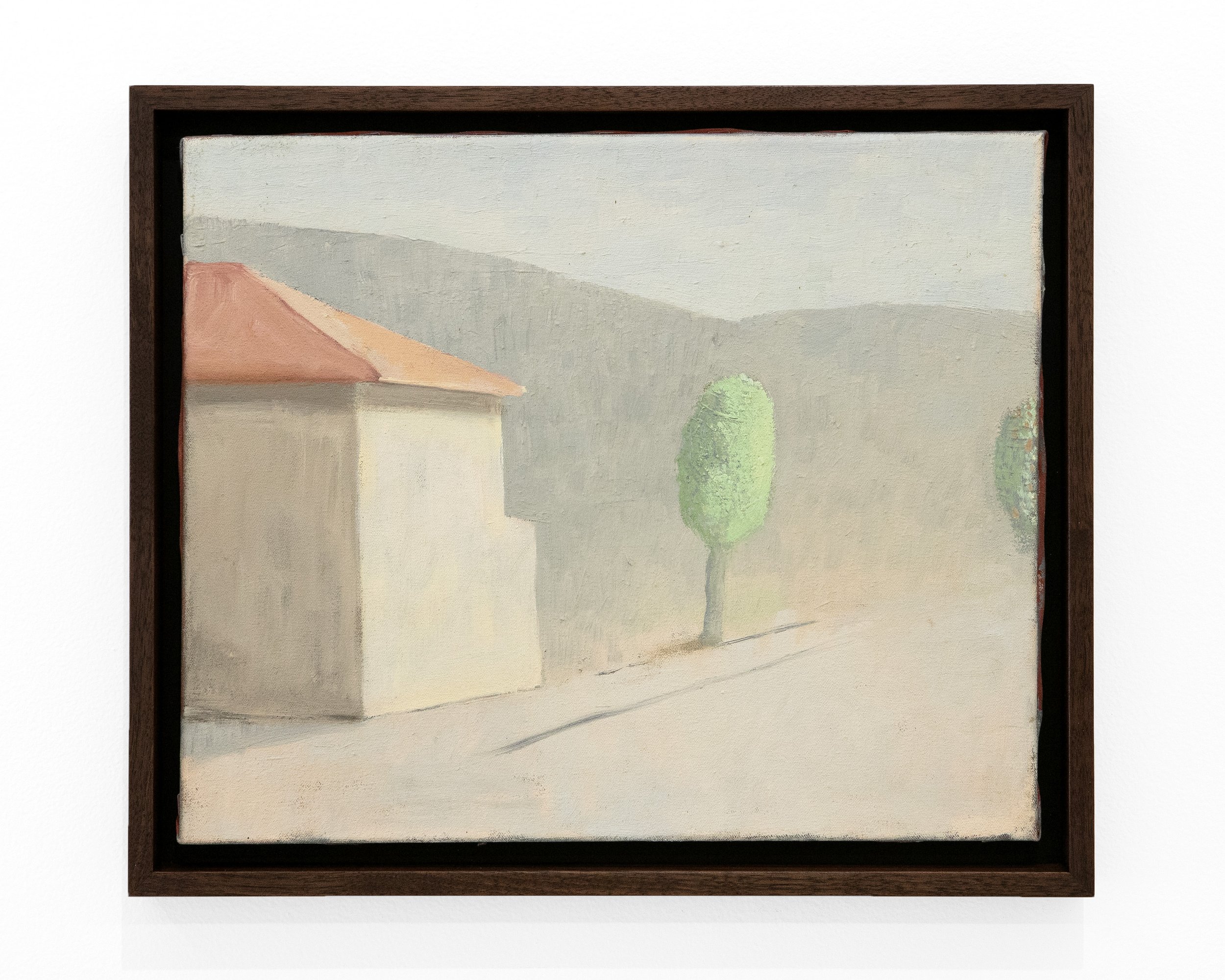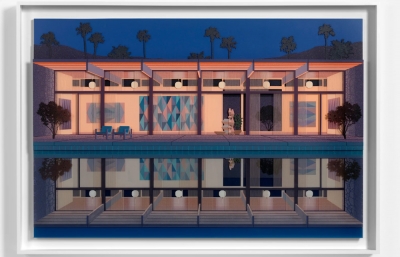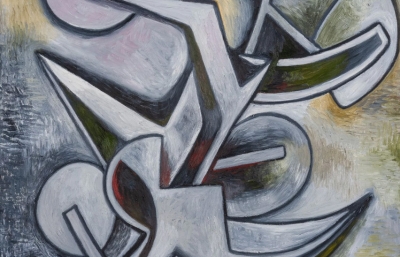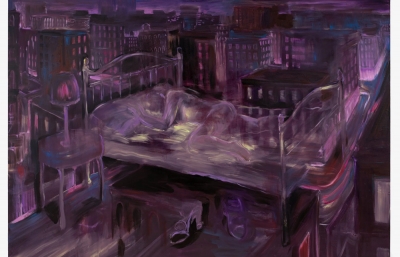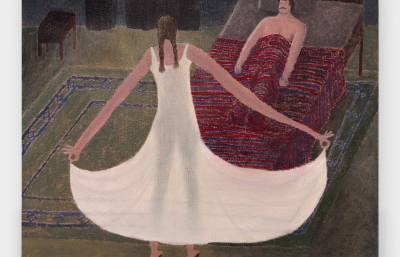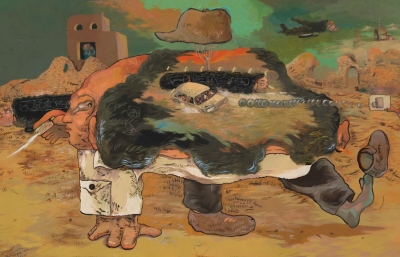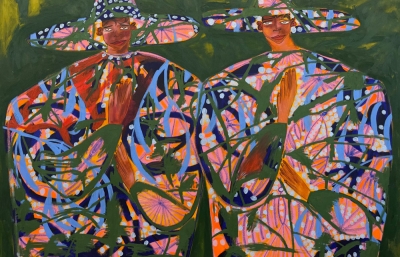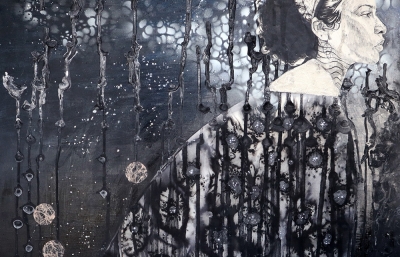pt.2 is pleased to present Honing In, a new exhibition of oil paintings by Martha Shaw. In Honing In, Martha Shaw turns her attention to a small group of subjects—a pair of trees, a yellow house, a beachside building, and a recurring calla lily. Painted on canvas at intimate scale, these forms appear again and again, subtly shifting in light, texture, and composition. Each repetition becomes a way of deepening focus, of searching for what lingers beneath the surface of the everyday.
The exhibition opens with a series of calla lily paintings. These works establish the quiet rhythm of the show: the same flower rendered multiple times, each with its own sensibility. Set against softly shaded gray fields, deep black, or wood pattern, the lilies oscillate between clarity and subtlety. In some, the bloom stands alone and iconic; in others, it merges with its surroundings, blurring the line between object and surface. Shaw uses these variations to explore how attention—repeated, focused—can transform the ordinary.
Throughout the exhibition, works are hung in pairs and clustered groupings—sibling paintings that reflect and respond to one another. These quiet relationships underscore the artist’s interest in rhythm, variation, and the act of sustained observation. Nothing is overly composed or embellished. Each element is placed with care, allowing mood to emerge through restraint. Shaw’s repetition is not mechanical, but thoughtful—a way of honing in until something familiar becomes newly seen.
The exhibition concludes with a collection of paintings depicting a beachside building—an invented structure with a red roof, often flanked by trees. This place doesn’t exist, though it feels familiar, like the entrance to a beach half-remembered. Across several canvases, Shaw returns to this form with slight variations. These works continue her exploration of repetition, but with a subtle shift in tone. Here, she is not observing the real but conjuring the almost-real—painting toward something that doesn’t quite exist, but feels like it could. In these scenes, Shaw’s quiet persistence becomes a way of giving form to something just beyond reach.



